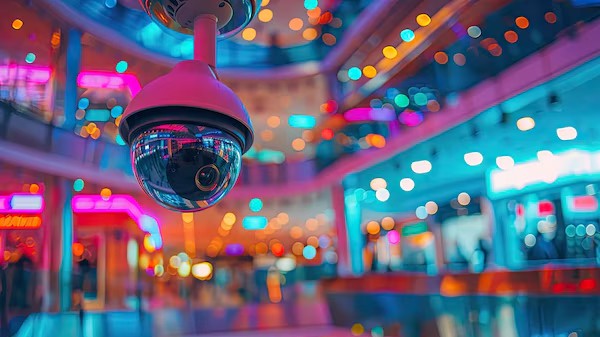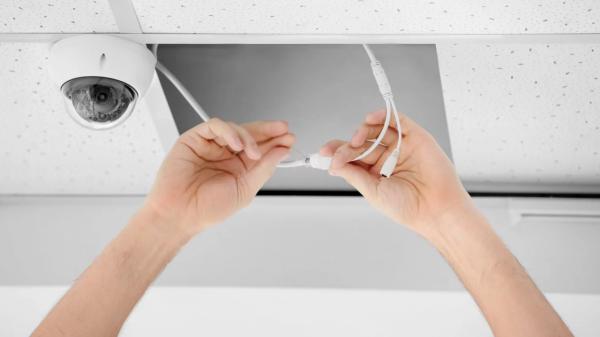

A Comprehensive Guide to Security Camera Cabling: Types, Failures, and Solutions
When it comes to setting up a security camera system—whether you're doing it yourself, troubleshooting issues, or relying on a professional installer—it's crucial to understand the various types of cabling suited for different installation scenarios.
What cabling is compatible with different security cameras? What factors lead to video loss or cable failure? Gaining insight into these questions can help you avoid costly downtime caused by cable issues.
For those installing a new security camera system, it's likely you'll be utilizing IP security cameras. These advanced systems typically employ Cat5e Ethernet cables, which transmit both power and data to the cameras. While some IP cameras may require a separate power supply, many operate using Power over Ethernet (PoE), allowing them to receive power through the same Cat5e cables. IP cameras can utilize various cable categories, including Cat 3, Cat 5, Cat 5e, and Cat 6; generally, a higher category indicates faster transmission speeds and greater bandwidth capacity, with Cat5e being the most prevalent choice today.
If you're looking to enhance an older system by adding cameras, a hybrid solution that blends both analog and digital technology may be beneficial. Analog or HD-TVI cameras typically use RG-59 Siamese cables to provide power and transmit video signals.
When purchasing cables, buying in bulk is often the most economical option. While you'll need to attach connectors yourself, bulk Ethernet cables can save money, offer greater longevity, and create a neater appearance compared to connecting pre-made cables.
As highlighted earlier, cable failure is a primary cause of security camera downtime. For businesses that rely heavily on surveillance, this can lead to significant costs, including wasted time, resources, and lost revenue—issues that could have been avoided with proper installation.
To select the right cabling, consider the specific requirements for your application, including factors like bend radius, temperature tolerance, oil resistance, jacket material, cable structure, electrical specifications, and relevant certifications.
Understanding the reasons behind typical cable failures can help prevent costly mistakes in cabling selection. Here are some common types of cable failures to watch for:
Loss of Continuity: Different cables have unique flexibility characteristics. Using the wrong type of cable and twisting it excessively can break the copper conductors, resulting in a loss of continuity.
Insulation Damage: The insulation is crucial for maintaining conductor integrity. It can become compromised through constant bending, abrasion, or breakage of the conductors.
Corkscrewing: This failure often occurs with pre-made Ethernet cables that haven’t been configured correctly. The corkscrew effect arises when torsion is released due to improper cable configuration, length, or direction.
Jacket Damage: Similar to loss of continuity and insulation issues, jacket damage refers to the external protective layer of the cable. Abrasion can wear through the jacket, exposing the conductors to damage. Additionally, exposure to oils, chemicals, or excessive heat can cause the jacket to crack and deteriorate.
Electromagnetic Interference: Security cameras are designed with shields to protect against electromagnetic interference. If these shields become compromised, it can lead to video loss.
Choosing the right cabling is vital, but other factors also play a significant role in ensuring cabling integrity:
Animal Damage: Rodents and other animals often chew on wiring. To mitigate this risk, encase your cables to protect them from animal damage. Fortunately, such damage is usually localized, minimizing the need for extensive cable replacements.
Incompatible Equipment: Ethernet and RG-59 cables are rated for specific electrical inputs. Connecting equipment that exceeds these ratings can cause damage. Consulting with an expert can help ensure proper equipment and cable compatibility.
Moisture: High humidity levels or water exposure can damage cables if they aren’t suited for such environments. Overexposure to moisture can lead to insulation cracks and increased stress, ultimately causing cable failure.
Mechanical Damage: Improper handling of cables by inexperienced individuals can result in bending, pulling, or tugging that the cables aren’t designed to withstand, potentially leading to video loss.
Acts of Nature: Unforeseeable events like earthquakes, hurricanes, or lightning strikes can cause significant damage to cabling systems, sometimes beyond repair.
Aging: Over time, cables can degrade and may need replacement. However, it’s wise to consult with a qualified professional before making any replacements, as sometimes only specific sections require attention.
Articles
All articles
AI Surveillance Systems: Transforming Safety and Operational Efficiency in Modern Shopping Malls
AI Surveillance Systems: Transforming Safety and Operational Efficiency in Modern Shopping Malls

The Advantages of a Comprehensive Home Surveillance System
The Advantages of a Comprehensive Home Surveillance System

Seeing Clearly: The Advantages of 4K Surveillance for Businesses
Seeing Clearly: The Advantages of 4K Surveillance for Businesses

Indoor vs. Outdoor Security Cameras: Making the Right Choice for Your Safety
Indoor vs. Outdoor Security Cameras: Making the Right Choice for Your Safety

The Smart Investment: How Monitored Security Cameras Enhance Business Safety
The Smart Investment: How Monitored Security Cameras Enhance Business Safety

2024 Security Camera Buying Guide: What You Need to Know
2024 Security Camera Buying Guide: What You Need to Know

Essential Guide to Troubleshooting IP Camera Systems
Essential Guide to Troubleshooting IP Camera Systems

Artificial Intelligence: Transforming IP Camera Systems
Artificial Intelligence: Transforming IP Camera Systems

Thermal Cameras: Enhancing Security and Operational Excellence Across Industries
Thermal Cameras: Enhancing Security and Operational Excellence Across Industries

Maximizing Safety and Efficiency: The Impact of IP Camera Systems Across Industries
Maximizing Safety and Efficiency: The Impact of IP Camera Systems Across Industries

Beyond Security: How Surveillance Cameras Transform Shipping and Receiving Operations
Beyond Security: How Surveillance Cameras Transform Shipping and Receiving Operations

Enhancing Safety: The Essential Role of Security Camera Systems in Apartment Complexes
Enhancing Safety: The Essential Role of Security Camera Systems in Apartment Complexes

Is a PTZ Camera the Right Choice for Your Business?
Is a PTZ Camera the Right Choice for Your Business?

Troubleshooting Nighttime Flickering: Understanding Your Security Camera Issues
Troubleshooting Nighttime Flickering: Understanding Your Security Camera Issues

Why Are My Cameras Showing Black and White Images?
Why Are My Cameras Showing Black and White Images?

Safeguarding Your Security Cameras from Hackers
Safeguarding Your Security Cameras from Hackers

A Comprehensive Guide to Security Camera Cabling: Types, Failures, and Solutions
A Comprehensive Guide to Security Camera Cabling: Types, Failures, and Solutions

Securing the Aggregate Industry: The Essential Role of Surveillance Cameras
Securing the Aggregate Industry: The Essential Role of Surveillance Cameras

Security Cameras: A Comprehensive Overview of Types and Features
Security Cameras: A Comprehensive Overview of Types and Features

Protecting Your Car Wash: Essential Security Measures Against Theft and False Claims
Protecting Your Car Wash: Essential Security Measures Against Theft and False Claims
Try TRASSIR For Your Business
Learn more about how TRASSIR analytic modules work! Demo mode is an opportunity to see for yourself how the system works, and also check the interface and test all the functions.Success!
We will contact you as soon as possible